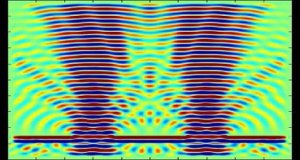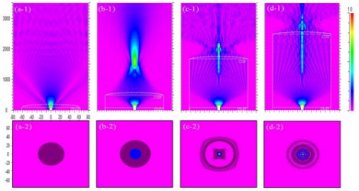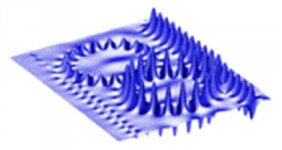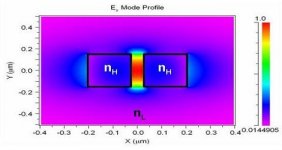5.1 Photonic Design
 Photonic Integrated Circuits at the VLSI population level of their electronics counterparts are considered a Holy Grail in the scientific community as they promise to deliver extremely high interconnection speeds and processing capabilities overcoming the physical limitations imposed in electronics. When simply defining Photonic Integrated Circuits (PICs), the idea of combining at least two optical functions in an integrated circuit simply comes to mind. However, during the past decade although giant leaps forward have been made, including hybrid integration between group III-V and group IV materials, the multifunctional PIC still remains far from realization.
Photonic Integrated Circuits at the VLSI population level of their electronics counterparts are considered a Holy Grail in the scientific community as they promise to deliver extremely high interconnection speeds and processing capabilities overcoming the physical limitations imposed in electronics. When simply defining Photonic Integrated Circuits (PICs), the idea of combining at least two optical functions in an integrated circuit simply comes to mind. However, during the past decade although giant leaps forward have been made, including hybrid integration between group III-V and group IV materials, the multifunctional PIC still remains far from realization.
 At the very heart of the process lies the application driven design of new components, that will overcome all the remaining obstacles and deliver a new class of photonic integrated devices capable of performing complex tasks with unparallel performance owing to the unique characteristics of light.
At the very heart of the process lies the application driven design of new components, that will overcome all the remaining obstacles and deliver a new class of photonic integrated devices capable of performing complex tasks with unparallel performance owing to the unique characteristics of light.
The OPTCOMM group has an extensive know-how in designing components for PICs and this has been confirmed from the successful participation in numerous EU projects where the group has been assigned with the role of the primary designer partner.
The tools of photonic design used include among others Beam Propagation Method (BPM), Finite Difference in Time Domain (FDTD) and Finite Elements Method (FEM). There is also involvement in the pre-fabrication process by directly producing grid compatible inputs for the mask layouts used in foundries.
 |
 |
 |
Some indicative designs produced through the aforementioned projects include:
- Active/Passive Integrated Microring Laser structures
- Coupled cavity devices used for monolithic integrated chaotic laser sources
- Quantum-dot amplifier novel design for high power pulse amplification used in MOPA systems
- Highly non-linear SiGe waveguides for mid-IR to near-IR conversion
- Optical couplers/combiners for mid-IR and near-IR signals
- Optomechanical structures for gradient force based tranducers.
Related projects:
- WAPITI
- PICASSO
- FAST-DOT
- CLARITY
Significant publications:
- A. Kapsalis C. Mesaritakis, H. Simos, C. Simos, M. Krakowski, I. Krestnikov, and D. Syvridis, “Tapered InAs/InGaAs quantum dot semiconductor optical amplifier design for enhanced gain and beam quality”, Optics Letters, Vol. 38, Issue 14, pp. 2404-2406 (2013)
- D. Alexandropoulos, A. Kapsalis, D. Syvridis, U. Troppenz, M. Hamacher H. Heidrich, “Design considerations for spatial monomode operation of InP-based passive vertically coupled microring resonators”, Proceedings of the 5th International Conference on Numerical Simulation of Optoelectronic Devices, NUSOD '05, pp. 119- 120 (2005)
- M. Kusko, D. Alexandropoulos, C. W. Tee, A. Kapsalis, D. Cristea, D. Syvridis, C. Kusko, “Numerical analysis of microring resonator obtained by wafer-bonding technology”, Proceedings of the SPIE, Volume 5956, pp. 349-360 (2005)
- M. Kusko, A. Kapsalis, C. Kusko, D. Alexandropoulus, D. Cristea, D. Syvridis, “Design of single-mode vertically coupled microring resonators,” 2nd European Optical Society Topical Meeting:" OPTICAL MICROSYSTEMS ", 30 Sept. – 3 Oct. 2007, Capri (Napoli), Italia, post dead-line paper
- D. Alexandropoulos, A. Kapsalis, D. Syvridis, "Suppression of higher order modes in vertically coupled micro-ring resonators," Microwave and Optical Technology Letters Vol. 49, No. 12, pp. 2963-2968, (2007)
- A. Kapsalis, I. Stamataki, C. Mesaritakis, M. Hamacher, H. Heidrich, “Design and Experimental Evaluation of Active-Passive Integrated Microring Lasers: Threshold Current and Spectral Properties,” IEEE Journal of Quantum Electron Vol.47, no.12, pp.1557-1564, Dec. 2011
- A. Kapsalis, I. Stamataki, C. Mesaritakis, M. Hamacher, H. Heidrich, “Design and Experimental Evaluation of Active-Passive Integrated Microring Lasers: Noise Properties,” IEEE Journal of Quantum Electron. Vol. 48, no.2, pp.99-106, Feb. 2012, Special issue on Optoelectronic Devices
- K. Hammani,M. A. Ettabib,A. Bogris,A. Kapsalis,D. Syvridis,M. Brun,P. Labeye,S. Nicoletti,D. J. Richardson and P. Petropoulos, "Optical properties of Silicon Germanium waveguides at telecommunication wavelengths", Optics Express 21, no. 14 (2013).
